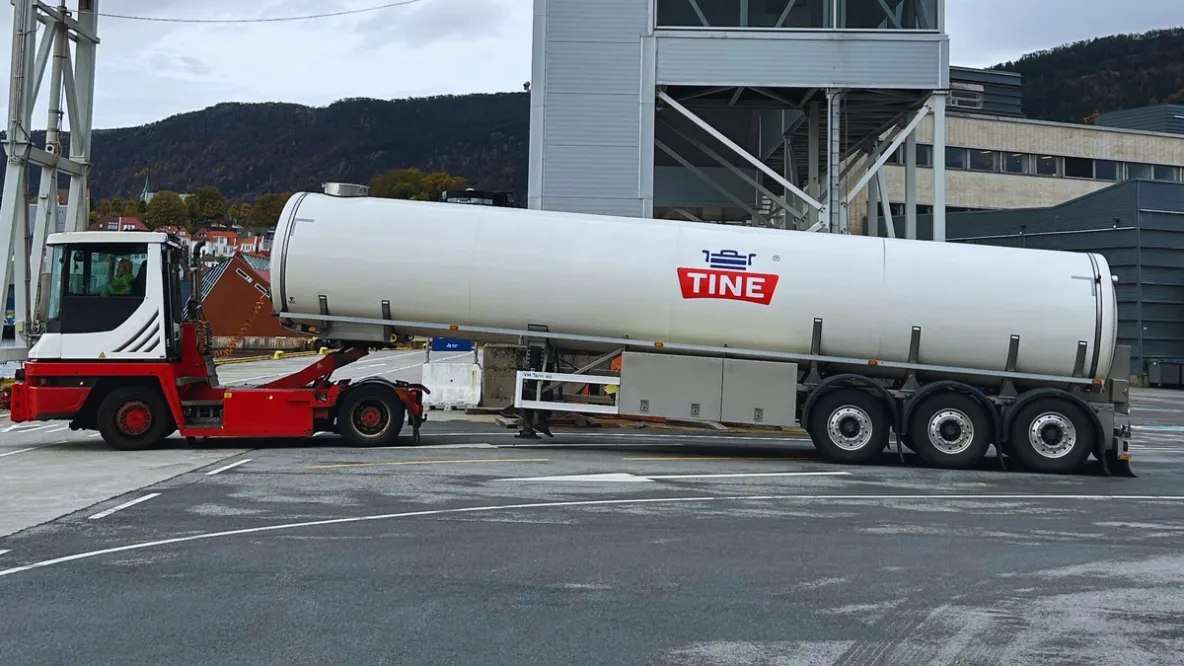with modern sea transport
Fjord Line maintains a steady course so that small and large players can move more and more freight transport from road to sea - both along the Norwegian coast and to the continent.

“Every year, Fjord Line ensures that large quantities of goods are transported on the blue-green sea route with modern environmental ships, both along the Norwegian coast and to the continent via Denmark”, says Håkon Leidland, head of freight at Fjord Line.
All types of cargo are transported by Fjord Line – from truck convoys and semi-trailers to import cars and loose trolleys are transported between Bergen, Stavanger, Kristiansand and Hirtshals in North Jutland.
Fjord Line annually transport a total of 54,500 freight units by sea.
Between the major cities of Western Norway
We set our sights on the Westland coast. On the domestic route between Bergen and Stavanger, Fjord Line transports 6,500 freight units annually.
“By moving goods from the roads to our ships between Bergen and Stavanger, we save the climate from significant CO2 emissions every single year. At the same time, the road network is spared, and traffic safety is improved, as there will be fewer cars on the roads between Bergen and Stavanger”, says Leidland.

The two modern environmental ships, MS Stavangerfjord and MS Bergensfjord, sail the domestic routes between Bergen and Stavanger.
In addition to transporting large quantities of cargo and goods, these sister ships transport people between the major cities of Western Norway. In fact, these were the first two cruise ferries in the world to be powered entirely by natural gas.
“Our ships use liquid natural gas (LNG). This ensures up to a 25% reduction in CO2 emissions, compared to sailing with conventional fuel”, says Leidland.
Facts: LNG
| Conversion to LNG has significant sustainability benefits. |
| The term LNG stands for “liquefied natural gas”, a natural gas with a number of benefits for the climate and environment. |
| By replacing marine diesel with LNG, a reduction of up to 25 percent in CO2 emissions can be achieved and, on top of that, a 90 percent emission reduction in nitrogen oxide (NOx), sulphur oxide (SOx) and particulates. While CO2 is well known for its contribution to global warming, the other substances also have negative consequences, especially for ecosystems. |
The sea route is most welcome
Major players such as Tine and REMA 1000 use Fjord Line to transport freight and goods by sea along the beautiful West Norwegian coast.
“This year, we will transport a total of 1,200 trolleys for Tine between Bergen and Stavanger. Whereas we will end up with 700 shipping units for REMA 1000. Tine and REMA 1000 are among our biggest customers between Bergen and Stavanger”, says Leidland.
Transport manager for industrial freight in Tine, Martine A. Gran Johnsen, is very pleased that they can use the sea route between Bergen and Stavanger. She is clear that Tine has clear sustainability goals, and chooses environmentally friendly transport where possible.
“Our dairy at Byrkelo in Sogn og Fjordane produces white cheese. Whey concentrate from this production is transported to our drying plant at Jæren. It is a large, consistent and predictable quantity to be transported. We send this by sea with Fjord Line, as it is a more environmentally friendly alternative for this type of transport”, says Gran Johnsen.

This was previously transported by road. But after Tine switched to sending the tanks with whey concentrate with Fjord Line in 2021, they save the driving equivalent of 250,000 kilometers each year. This saves the dairy operator and the environment no less than 112,500 litres of diesel annually, with subsequent emissions.
Tine’s trolleys are dispatched with Fjord Line without a driver. In this way, they not only save the environment and spare the road network from stress, Tine also gets a cost benefit.
“Sending our trolleys with Fjord Line works very well. We enjoy a good working relationship – it’s stable and there’s good follow-up all the way. Sending this type of transport by sea is very beneficial,” says Gran Johnsen.
REMA 1000: – Flows well
The grocery retailer REMA 1000 also has high environmental ambitions and is always looking for environmentally friendly solutions for the transportation of its goods.
“In line with our environmental strategy, we are always looking for opportunities to reduce our emissions into the environment. We do this by investing in environmentally friendly road transport, but also by moving goods from road to rail and, in this case, also by sea. Transporting our goods between Bergen and Stavanger with Fjord Line is a better solution for us than transporting the goods by road”, says transport director at REMA Distribusjon, Anders Hustoft.

Like Tine, REMA sends 1,000 of its own trolleys on Fjord Line’s ferries between Bergen and Stavanger.
“We have very good experience with this method for transporting goods. We have a good working relationship with Fjord Line. They are very customer-oriented, and it is a stable transport solution. This literally runs very smoothly”, says Hustoft.